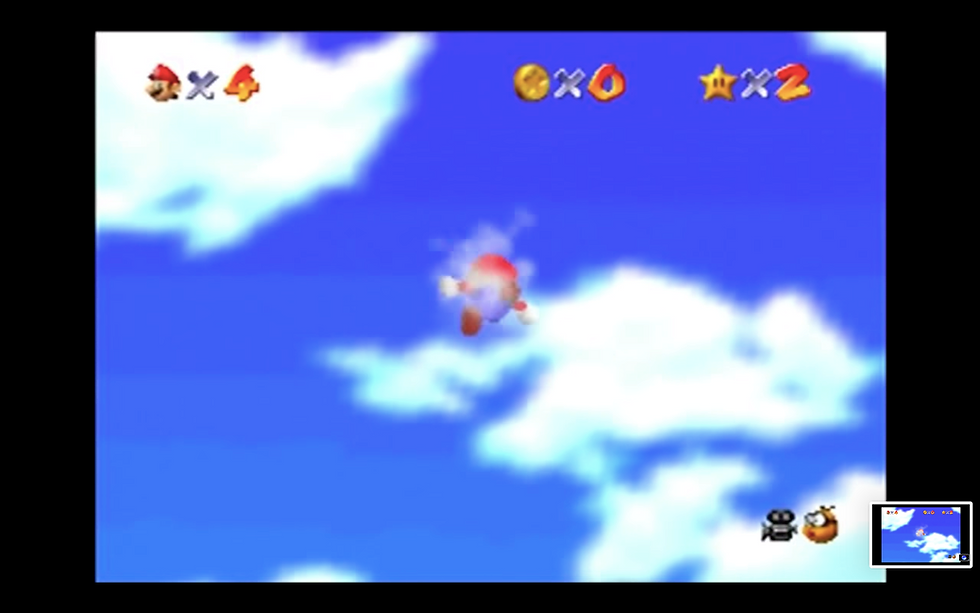Game Review: Star Fox 64 (1997)
- hbunker

- Oct 17, 2019
- 3 min read
Updated: Oct 20, 2019
Star Fox 64 was released in 1997 to critical acclaim. Nintendo received high praise for the gameplay, as well as the tidy narrative and surprising flexibility in terms of level progression (Perry, 1997). The game’s opening sequence features Lucasfilm-esque text scrolling on a galactic backdrop, introducing the anthropomorphic Star Fox team: Fox McCloud, Slippy Toad, Falco Lombardi, and Peppy Hare. Players assume control of Fox in order to quash an assault on Corneria (an Earth analog), after which the team fights their way across the Lylat System, confronting mechanized fleets, environmental hazards, asteroid belts, derelict satellites, and bounty hunters. At last, on the ominously-monikered planet Venom, they defeat the maniacal Andross, the military scientist who murdered Fox’s father, exiled for biochemical weapon experimentation.
All playthroughs begin on Corneria and end on Venom, but there are 25 possible pathways across 15 playable zones. Routes are determined by player performance and secret achievements and entail varying difficulties and vehicles (starship, tank, or submarine). They also affect the game’s ending: easier paths end in Andross’ straightforward defeat followed by the team’s victorious homecoming. Harder paths unlock Andross’ true form—a giant floating brain—and the release of Fox’s father, who is revealed to have survived in captivity.
📷
Map of Lylat System, including active path (Nintendo, 1997).
Star Fox 64 plays like a semi-linear, level-based shoot ‘em up game punctuated by mission briefings, strategy hints, dialogue, and rhetorical one-liners. Vehicle weaponry consists of upgradable lasers and limited heavy weaponry. Higher difficulties approach a claustrophobic bullet hell: relentless projectiles, lasers, bombs, collapsing buildings, and enemy ships crowd the screen. Accelerated music and distressed commentary from comrades drive the player forward in a desperate, chaotic surge of performance anxiety. Thanks to its prevailing ethos of heroism, however, the game successfully balances this pressure with quantifiable rewards, triumphant musical swells, and dialogic commendation. The game often leans on classic platformer elements: finite lives, linearity, obstacle-dodging mechanics, and collectible power-ups.
The game’s three-dimensionality is often constrained by the level design, in which players advance at a constant rate along fixed corridors while dodging or shooting obstacles. Unable to fully stop, players must brake, accelerate, and perform defensive maneuvers such as somersaults (to loop behind enemies) or barrel rolls (to deflect projectiles). Certain stages allow omnidirectional movement—“All-Range Mode”—which takes full advantage of the game’s engine and demands new combat strategies.
📷
Submarine level on the planet Aquas (ibid.)
The game deploys archetypal characters and tropes of heroism, revenge, and honor. However, amid its spiffy sci-fi trappings, Star Fox 64 signals more complex issues. Blurring the line between justice and vengeance, for example, Fox reconciles his desire to protect the Lylat System with his personal vendetta—a balance further complicated by the fact that the protagonists are paid mercenaries who decline honorary induction into the Cornerian army. Indirectly, the plot also gestures toward problems of nationalist militancy; after all, the antagonist emerges from a military-industrial complex whose factories, mines, and colonial outposts are scattered across the solar system. Large-scale industrial waste even acknowledges the environmental effect of mass production.
One of the most iconic features of Star Fox 64 is actually the accessory that shipped alongside the game: the Rumble Pak, a proto-VR device that sends strong vibrations through the controller in response to on-screen projectile damage, explosions, or fiery crashes. Most modern controllers’ haptic/vibrational functionality far surpasses the rudimentary rumbles of Nintendo’s accessory. Nevertheless, the Rumble Pak hinted at an unprecedented mainstream possibility of multisensory immersion. For this, at least, Star Fox 64 shines brightly among the console’s parade of influential titles—Super Mario 64 (1996), GoldenEye 007 (1997), The Legend of Zelda: The Ocarina of Time (1998), Animal Crossing (2001)—all of which pushed contemporary formal and technological boundaries and laid important groundwork for future game design and hardware development.
📷
Andross: easy mode (ibid.)
References
Perry, Doug. "Star Fox 64." IGN. 1997. Updated 2018. https://www.ign.com/articles/1997/05/17/star-fox-64
Star Fox 64 [Video game]. 1997. Kyoto, Japan: Ninendo EAD. Nintendo 64.
"Rumble Pak." Wikipedia: The Free Encyclopedia. Wikimedia Foundation. Web. Accessed 10/16/2019. https://en.wikipedia.org/wiki/Rumble_Pak




Comments